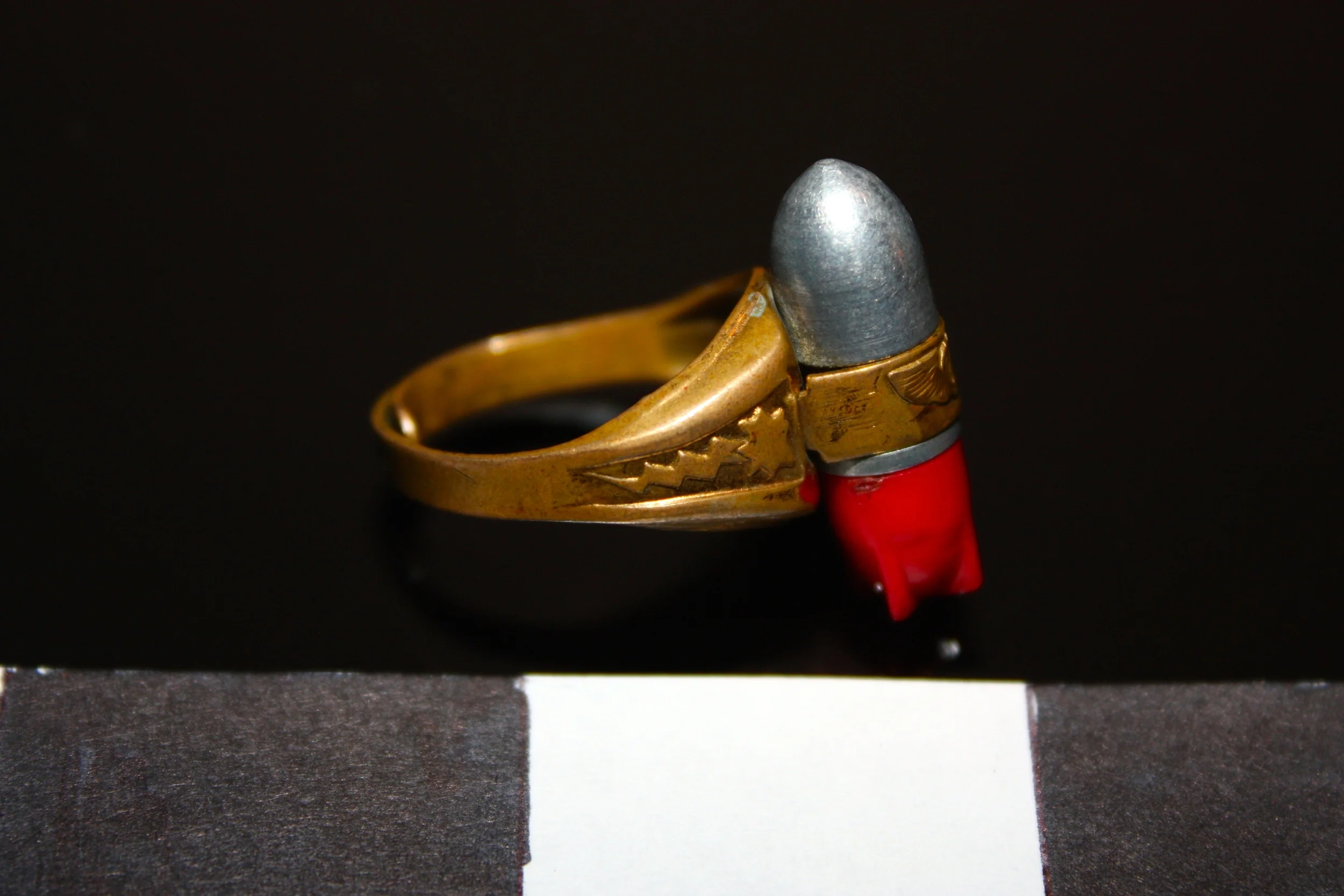radioactive Toys
As soon as Atomic Energy was unlocked in the 1940s and announced to the general public at the end of World War II, efforts began to promote this new discovery to young people and the public at large. Examples below represent some of the products available to kids from the late Forties into the Sixties. A Chemcraft chemistry set was a popular item, complete with a spinthariscope to view individual radioactive decays, a "radioactive screen" coated with a small amount of Radium, and a small vial of low grade Uranium ore.
The "Geiger Counter Lab" by The Library of Science contained a kit to build a home-brew geiger counter complete with two samples of uranium ore, one low grade, the other high grade (a small pebble of Pitchblende)
The Kix Lone Ranger "Atomic Bomb Ring," was first introduced in 1947, less than a year after the destructive power of nuclear weapons was introduced to the world. A small spinthariscope, it contained minute traces of short lived Polonium-210 (along with a small amount of longer lived Lead-210), and due to the short 138 day half-life of 210Po, this toy ring no longer produces visible scintillations.
The Kix Lone Ranger "Atomic Bomb Ring," was first introduced in 1947, less than a year after the destructive power of nuclear weapons was introduced to the world. A small spinthariscope, it contained minute traces of short lived Polonium-210 (along with a small amount of longer lived Lead-210), and due to the short 138 day half-life of 210Po, this toy ring no longer produces visible scintillations.
The Kix Lone Ranger "Atomic Bomb Ring," was first introduced in 1947, less than a year after the destructive power of nuclear weapons was introduced to the world. A small spinthariscope, it contained minute traces of short lived Polonium-210 (along with a small amount of longer lived Lead-210), and due to the short 138 day half-life of 210Po, this toy ring no longer produces visible scintillations.
The Kix Lone Ranger "Atomic Bomb Ring," was first introduced in 1947, less than a year after the destructive power of nuclear weapons was introduced to the world. A small spinthariscope, it contained minute traces of short lived Polonium-210 (along with a small amount of longer lived Lead-210), and due to the short 138 day half-life of 210Po, this toy ring no longer produces visible scintillations.
On the left below is a 1946 dime containing 90% Silver (Ag) and 10% Copper (Cu). Between 1949 and the mid 1960s when the composition of dimes removed the Silver content, the American Museum of Atomic Energy in Oak Ridge, Tenn. irradiated visitors' dimes with a source of neutron radiation making them radioactive for a short period of time.
The neutron source was originally a Antimony-Beryllium source that used high energy gamma rays to knock a neutron out of the Beryllium nucleus, this was later changed to a more common Plutonium-Beryllium source that utilized an (alpha,n) reaction. Natural Silver has two isotopes Ag-107 and Ag-109, both of which have high neutron capture cross sections. Neutron Capture reactions on these isotopes produced short lived Ag-108 (25 second half-life) and Ag-110 (2.39 minute half-life) as well as practically undetectable quantities of their longer lived isomers (Ag-108m, and Ag-110m).
These short lived isotopes quickly decayed while the visitor was still in the museum and a geiger counter was on hand to prove the reactions took place as described.
To the right, you see a Spinthariscope containing small amounts of Radium made by the Gilbert Toy Company. These radioactive toys accompanied others produced in Gilbert's most expensive toy, the Gilbert Atomic Energy Lab, which also contained various Uranium ores and alpha, beta, and gamma emitting isotope sources. These Spinthariscopes represented just one of many small devices by which the curious young experimenter could "see" the power of these radioactive elements, along a Cloud Chamber and Geiger Counter.
